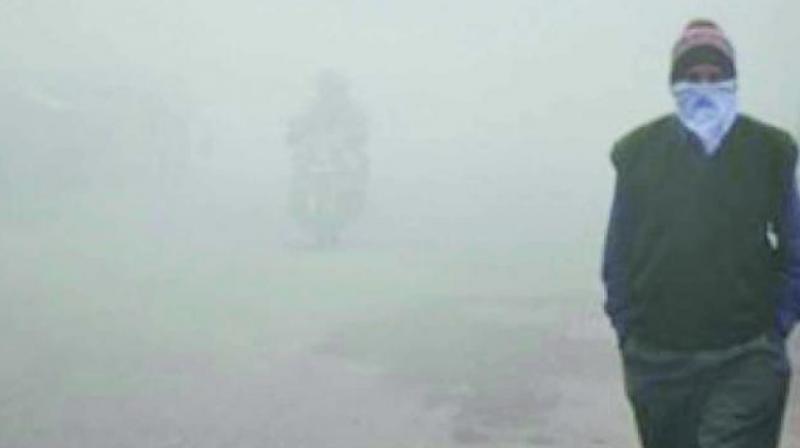Act now or vanish into thin air

Urban air pollution is a major concern in major cities throughout the world in both developed and developing countries. Exposure to high concentrations of pollutants is directly or indirectly linked to a broad spectrum of acute and chronic health effects, depending on the constituent of the pollutant. The World Health Organisation has reported seven million premature deaths worldwide due to indoor and outdoor air pollution in 2012.
The swelling urban population and increased volume of motorised traffic in cities have resulted in high air pollution. One of the major sources of UAP is the road transport sector. Domestic, commercial and industrial activities also contribute to air pollution.
However, in cities in developing countries, including India, the contribution from unidentified, unaccounted and unregulated sources within the city and neighbourhood cities is yet to be quantified. Vehicular exhaust emissions caused by a large number of older vehicles coupled with poor vehicle maintenance, inadequate road infrastructure, and low fuel quality is also one of the reasons for high UAP. Additionally, resuspension of road dust due to movement of traffic and tyre and brake wear are also some of the significant sources of ambient PM (particulate matter) concentrations in urban areas.
What is needed is an urban air quality management plan with long-term and short-term pollution level goals.
In the recent past, urban air quality in cities in developed countries has shown signs of improvement on account of efficient implementation of urban air pollution management practices.
In the UK and countries of the European Union, urban air quality management strategies are effectively implemented and regularly monitored at specifically designated air quality management areas. However, in some developing countries, these are independently applied in various forms, e.g. mandatory use of clean fuel (CNG/LNG); use of catalytic converters; restrictions on movement of heavy vehicles in the city during daytime; declaration of low emission zones; road rationing, banning of dirty fuel in industries, road space rationing, etc. The introduction of the recent graded response plan for Delhi NCR cities is one of the examples of controlling episodic air pollution level.
Some of the success stories of the urban air quality management system, which efficiently reduced pollution levels, are:
l Congestion and road user charging schemes have been implemented successfully in London. It has significantly reduced CO2, NOX and PM10 concentrations by 16.4, 13.4 and 6.9 per cent, respectively, which further improved health benefits.
l Vehicular exhaust emission control implementation has reduced PM2.5 emissions by 24 per cent and 21 per cent in Los Angeles and Rubidoux (in California) between 2002 and 2012.
l Low-emission vehicles and BRT implemented in Mexico City Metropolitan Area has significantly reduced urban air pollution levels.
These examples clearly show definite benefits from implementing management practices to improve urban air quality. Therefore, there is a need for an effective urban air quality management plan at the city and local (AQCR) scale which has capability to deal with episodic air pollution conditions as happened during November 2016 in Delhi.
In the UK, air quality management areas are identified and declared through procedures suggested in Local Air Quality Management (LAQM) regulatory guidelines, and air quality of this area is improved by implementing pre-evaluated management practices. Looking at the increasing urbanisation globally, the need of the hour is to equip the air quality regulatory authorities with an effective and efficient Urban Air Quality Management plan.
The plan needs to be interconnected with components such as air quality standards/limits of all criteria and hazardous air pollutants; continuous real-time air quality monitoring network along with display systems; efficient comprehensive and updated emission inventory (eg online source emission inventory for industries or e-inventory); air quality modelling (able to capture episodic conditions and also chemically reactive species) and control practices (based on their efficacy in reducing pollution level, socio-economic feasibility) and public participation.
(Dr Rakesh Kumar is the director of National Environmental Engineering Research Institute, Nagpur)

